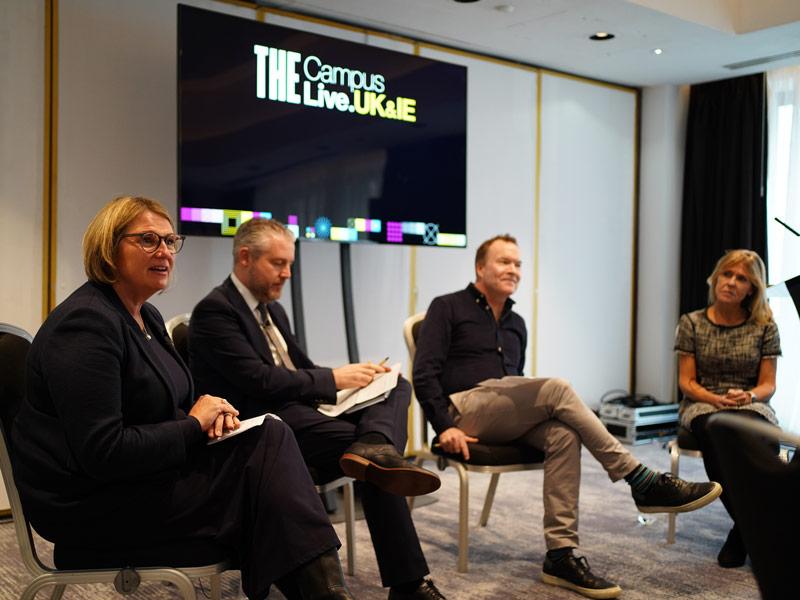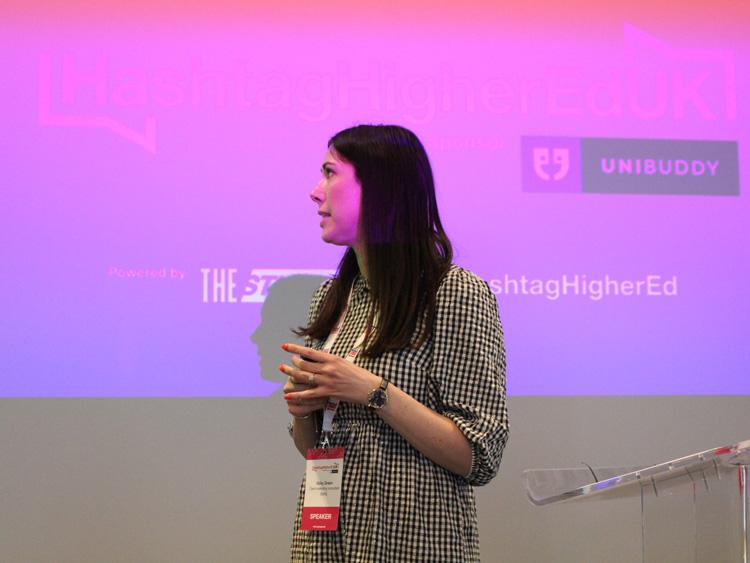
How can we build a healthy organisational culture in universities?

Defining organisational culture in a university can be a challenge. There are so many teams, departments and microcultures within an institution that it can be hard to get a sense of what drives staff and students. During the 2022 THE Campus Live UK&IE event, a panel held in partnership with SMRS discussed how universities can build a healthy organisational culture.
Jane Hopkinson, culture consultant with strategic marketing and communications experts SMRS, explained that we can describe institutional culture as “the way we do things around here…when nobody is watching”. A healthy culture, she said, should be one with healthy business practices and systems. This contributes to physically and mentally healthy people who are supported, enabled and set up for success. And this means there is no mismatch between how the organisation describes its culture and what happens beneath the surface. “If people perceive it to be a toxic environment, that will impact on their day-to-day experience,” she said.
Alistair Jarvis, pro vice-chancellor of the University of London, argued that people often get a sense of a university culture “within minutes” of getting there, but agreed that there is usually a diversity of cultures within that. “Different departments and groups face different challenges and may be resistant to attempts to create an organisational culture because their loyalty might be to their particular area,” he said.
Cultures are often driven from the top down, so when leadership changes, there is a knock-on effect. “I worked at an institution that recruited a new vice-chancellor at a time when it needed to refresh its strategy,” explained Jane Chafer, vice-president of membership, marketing and communications at the Council for Advancement and Support of Education. “We decided to crowdsource our strategy, and stakeholders saw they were being involved in a different way.” The result was a one-page document outlining the key themes and values defining the university’s culture and strategy, with structures and processes also changing to reflect the new direction.
This sort of transparency is crucial when working towards a healthier culture, added Jarvis. “It can be hard to have a positive culture if people are hanging on to information, so make sure people are sharing information effectively,” he said. “Protective silos can also be a barrier, so get people working together from different places, pooling their knowledge and resources. This can help to break down silos organically.”
Hopkinson echoed this sentiment, adding that commitment to cultural change must come not just from leaders but from those at the grass roots of the institution. “You might have posters on the wall about values, but how are these meaningful in someone’s day-to-day role? What behaviours do you expect them to exhibit? Are you living your values or laminating them?”
Likewise, leaders must get a sense of how institutional culture impacts staff in a range of roles, rather than simply listening to their peers. “Find reference points at different levels or you might not get an idea of what the culture really is,” said Chafer. “Sometimes the best way to find out what works is to do something, get feedback, and change. The culture doesn’t develop if we just sit there listening.”
Celebrating wins as well as weaknesses can help overcome the feeling that progress is too slow, added Jarvis. “It’s a long process but there are quick wins, so celebrate them and learn from them, rather than focusing on what’s wrong,” he concluded.
The panel:
- Dan Beynon, head of education, SMRS (chair)
- Jane Hopkinson, culture consultant, SMRS
- Jane Chafer, vice-president of membership, marketing and communications, Council for Advancement and Support of Education
- Alistair Jarvis, pro vice-chancellor, University of London
Find out more about SMRS.

